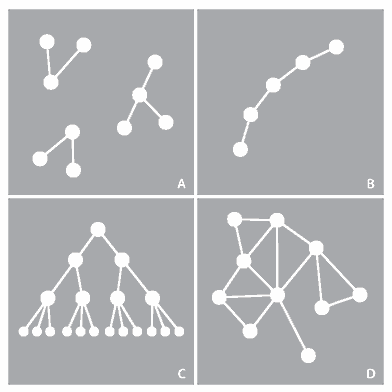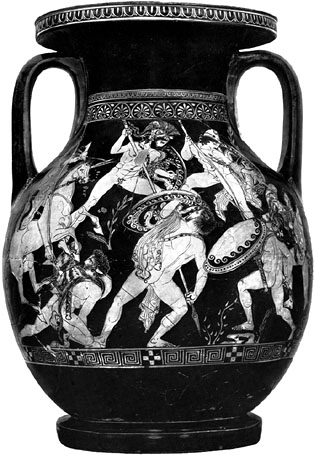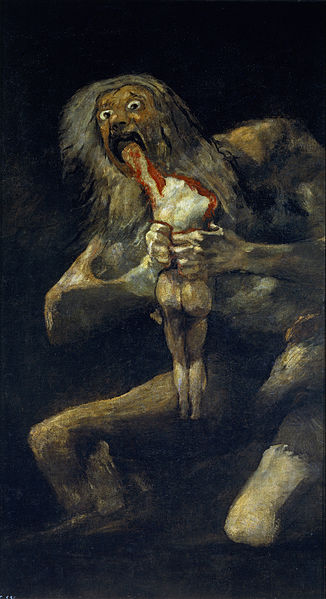SCS Blog Author Page
Posts by T. H. M. Gellar-Goad
How learning works in the Greek and Latin classroom, part 1
This month’s column is the first part in a series I’ll post every other month or so about how we can apply and see in action the 7 principles of research-based pedagogy described in the excellent book How Learning Works, by Susan Ambrose, et al. This month’s topic: knowledge organization, ch. 2 of the book.
|
|
The bitter cup in Lucretius and in the Incidents in the Life of a Slave Girl of Harriet Jacobs
Harriet Jacobs, born in Edenton, North Carolina, in 1813, was the first formerly enslaved woman to write a narrative of freedom: Incidents in the Life of a Slave Girl, Written by Herself, first published in 1861, now widely recognized as a masterpiece and a seminal part of the genre of 19th-century African American narratives of freedom. Incidents pseudonymously details Jacobs’ early life in slavery, her exposure to grievous harm and sexual violence at the hands of a cruel master, her marriage to and bearing of children by a different white man, her efforts to get her children out of the South, and her own flight from slavery — first hiding locally for seven years in her grandmother’s attic, and then fleeing to New York and eventual, hard-bought freedom. |
|
“Gallows enthusiasm” on and beyond the academic job market
This month’s column is adapted from a paper I gave at the invitation of the Graduate Student Issues Committee at the CAMWS meeting in Waco earlier this month. The humanities are a field in crisis because the number of students pursuing liberal-arts degrees has plummeted over the past couple decades. Classics is producing more Ph.D.s than the discipline can support. Online education will be the death of us all. Sound familiar? Well, most of that’s bull. The decrease in liberal-arts majors was caused by opening non-humanities fields like engineering to women: without formal gender discrimination, as Heidi Tworek explains, women’s humanities-degree rates have adjusted to match men’s, which have remained stable since the 1960s. Online education has indeed opened opportunities Read more … |
|
Todd Akin, the Greek doctor Soranus, and "legitimate rape"
So ended Missouri Republican Todd Akin’s chances of unseating Democratic Senator Claire McCaskill in the 2012 U.S. election. Discussing pregnancy resulting from rape (timeline of the comments here), Akin was defending his belief that anti-abortion laws shouldn’t include exemptions for victims of rape. Akin’s words are a now-classic example of a “Kinsley gaffe,” when a politician slips up and says what s/he actually thinks—classic enough that the term “ Read more … |
|
Panorama or zoom? Two methods of teaching Myth
Greek Myth is one of the standbys of Classics general-education courses at colleges and universities across the United States. These courses often have high enrollments and are populated by students with little prior knowledge about the ancient Mediterranean world who are taking the course to fulfill a degree requirement. They may take Myth because of a lifelong interest in the stories (or because they’ve read the Percy Jackson series), they may be inspired to major in Classics by the course, or they may never read or think about Graeco-Roman culture after the term ends. A common way of teaching the Myth survey course is like a panorama, a wide-angle shot that tries to fit in as much content as possible from a high-altitude perspective. I took a different approach in my fall 2013 Greek Myth course at Wake Forest University — a closeup, zooming in on one specific ancient myth-cycle in elaborate detail. Rather than try to cover Graeco-Roman mythology from Chaos to Read more … |
|
Rehash of the Titans: Sequels to the Titanomachy on the American screen (part 2)
In last month’s column, I offered an overview of the Greek myth of the Titanomachy, the war between the Olympian gods (Zeus, Hera, and all the rest) and the earlier generation, the Titans; and I discussed some recent media telling of the escape of the Titans from their underworld prison and a second Titanomachy: in Disney’s 1997 Hercules, in the 1998 straight-to-video Hercules and Xena animated movie, in the 2012 movie Wrath of the Titans (sequel to the remake of Clash of the Titans), in the 2013 movie Percy Jackson: Sea of Monsters, in the 2011 movie Immortals, and in the video game series God of War.
Today I finish the journey by exploring the Read more … |
|
Rehash of the Titans: Sequels to the Titanomachy on the American screen (part 1)
Why has the Titanomachy been so fascinating a subject for movies, TV, and video games in recent years?
|
|
From Euterpe to YouTube: Popular music and the classics
“At last my love has come along.” — At Last, written by Mack Gordon and Harry Warren Etta James’ most famous song quotes the first line of the love-elegist Sulpicia, one of the few surviving Graeco-Roman women poets. One of the song’s composers, Harry Warren (born Salvatore Antonio Guaragna), was the son of Italian immigrants. Perhaps he encountered the line through them, and it stuck with him over the years? More likely a coincidence. In “Rumour Has It,” a recent chart-topper by the pop star Adele—a self-described admirer of Etta James and lover of poetry—the plot is one of love unrequited and rumor at large, a scenario reminiscent of Dido, Aeneas, and Rumor in Vergil Aeneid book 4. (I’m not the first to make this association: see @calpunzel on Twitter.) Even closer correspondences with Read more … |

 Experts and novices mentally organize their knowledge in profoundly different ways. By and large, even when we as students or teachers explicitly discuss and consciously implement knowledge acquisition processes — like flashcards, or declension drills — our mental systems of organizing the knowledge acquired are generally implicit and subconscious. But the
Experts and novices mentally organize their knowledge in profoundly different ways. By and large, even when we as students or teachers explicitly discuss and consciously implement knowledge acquisition processes — like flashcards, or declension drills — our mental systems of organizing the knowledge acquired are generally implicit and subconscious. But the 
 In Greek myth, the Titans were the gods who ruled the cosmos in the generation before the ascent of the Olympians (Zeus, Hera, Poseidon, Hades, and the like). The king of the Titans, Kronos, came to power by castrating his father Ouranos and held onto that power — in view of a prophecy that his son would overthrow him — by swallowing each of his children at birth. But his wife, Rhea, replaced baby Zeus with a rock and hid him on the island of Crete until he grew strong enough to force Kronos to regurgitate his siblings, whom he then led in battle against Kronos and kin. This battle, the war of the Olympians against the Titans, is called the Titanomachy, and can be
In Greek myth, the Titans were the gods who ruled the cosmos in the generation before the ascent of the Olympians (Zeus, Hera, Poseidon, Hades, and the like). The king of the Titans, Kronos, came to power by castrating his father Ouranos and held onto that power — in view of a prophecy that his son would overthrow him — by swallowing each of his children at birth. But his wife, Rhea, replaced baby Zeus with a rock and hid him on the island of Crete until he grew strong enough to force Kronos to regurgitate his siblings, whom he then led in battle against Kronos and kin. This battle, the war of the Olympians against the Titans, is called the Titanomachy, and can be